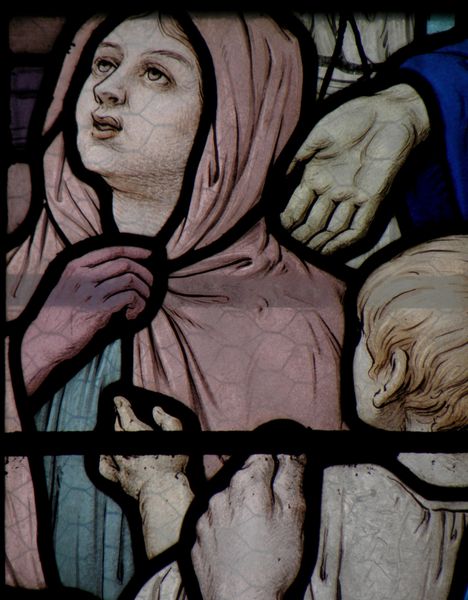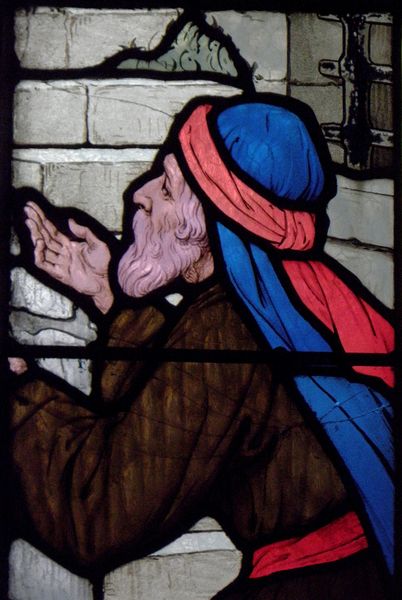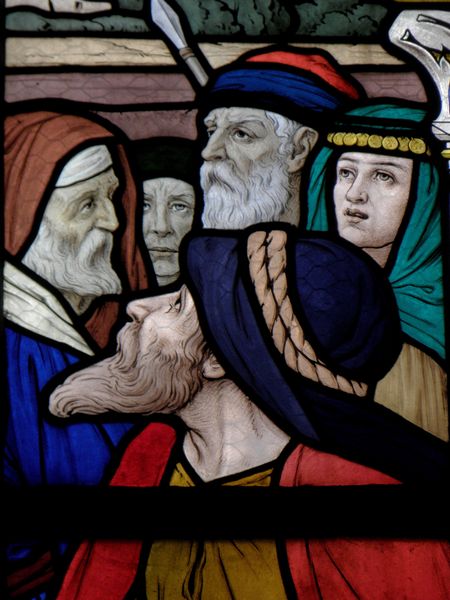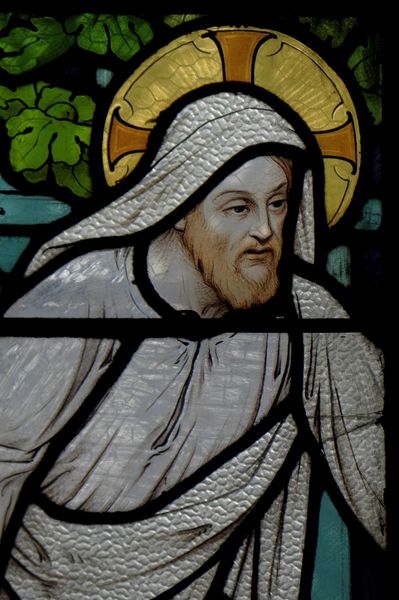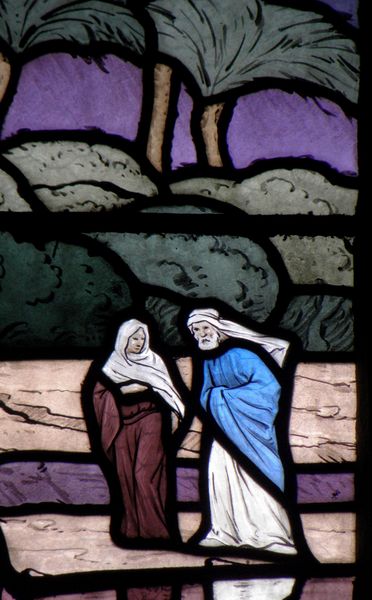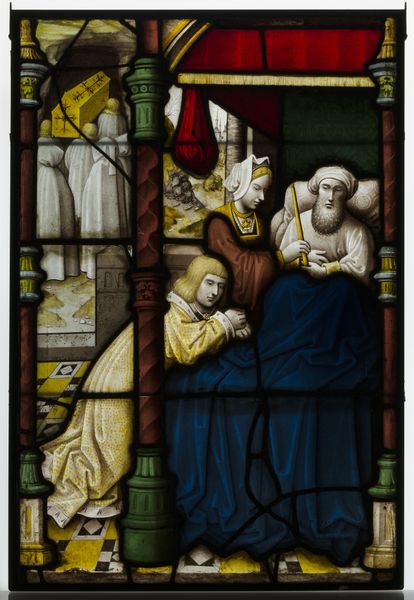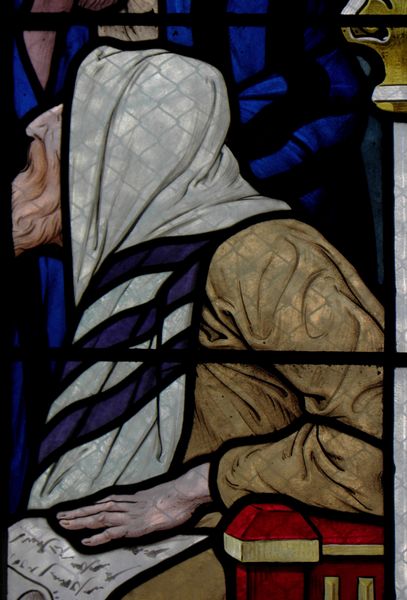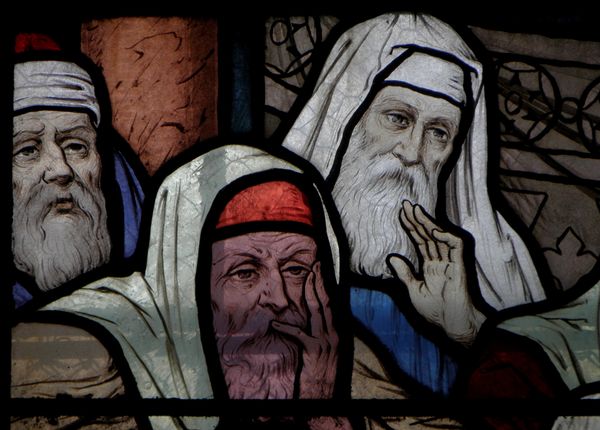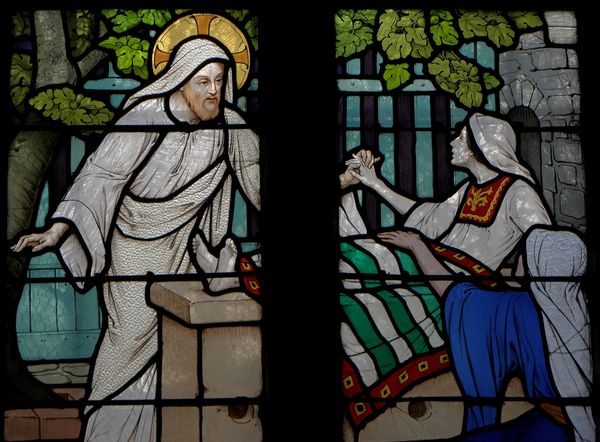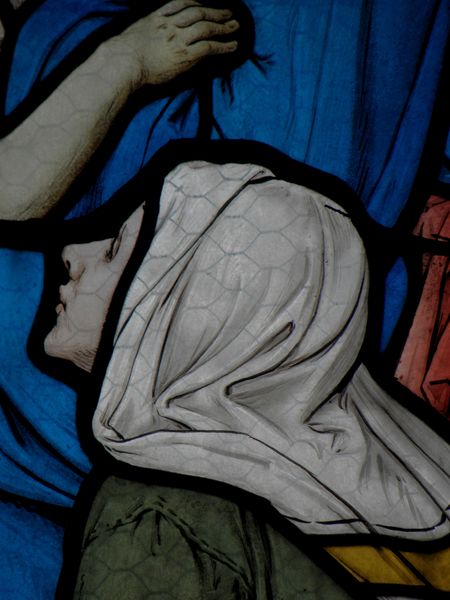
Jesus and the Samaritan woman. Eglise Saint-Sulpice de Fougères (detail) 1919
0:00
0:00
painting, glass
#
portrait
#
painting
#
figuration
#
glass
#
symbolism
#
academic-art
#
portrait art
Copyright: Public domain
Curator: Looking at this, I’m immediately struck by the stark contrasts in color. The cobalt blue against the faded rose—there's a striking intensity despite the age. Editor: Indeed. What you are observing is a detail from the stained glass of "Jesus and the Samaritan Woman" within the Église Saint-Sulpice de Fougères. The piece dates back to 1919 and is the work of Ludovic Alleaume. Its academic and symbolic elements speak to its religious function. Curator: Symbolic, yes, but beyond the narrative function, observe how the lead lines structure and almost trap the figures. The downward gaze of the Samaritan woman adds to this effect, contributing to an atmosphere that's undeniably heavy. Editor: The narrative, steeped in cultural history, adds layers to our understanding. Consider the radical nature of Jesus engaging a Samaritan woman during that era. This was a direct challenge to the social hierarchy and purity laws upheld by the religious establishment. Curator: Absolutely. Alleaume successfully uses the glass medium, the visual structure itself, to portray this feeling. Her slightly bowed head and clasped hands give a strong sense of deference and supplication. And in combination with the placement in the windows, there is also a sense of her being looked down upon, as an outsider to the place. Editor: The piece echoes prevalent societal expectations. Though presented as an act of compassion, the scene reiterates established gender and cultural norms. A public acceptance by religious places—reinforcing what was seen as truth at that time. Curator: Even through its formal choices. I appreciate the vibrant jewel tones used for the woman, especially for her dress. It contrasts powerfully with her head covering and pale features, immediately drawing my attention to her presence within the artwork. Editor: Precisely! Through that dynamic of material, construction, and portrayal, Alleaume's piece operates as a prism through which we understand the intersection of faith, gender, and cultural acceptance at the turn of the century. Curator: I hadn’t thought about it like that, and the play of light definitely invites further consideration into that complexity.
Comments
No comments
Be the first to comment and join the conversation on the ultimate creative platform.
